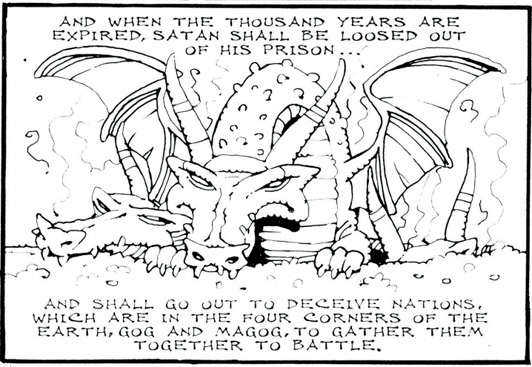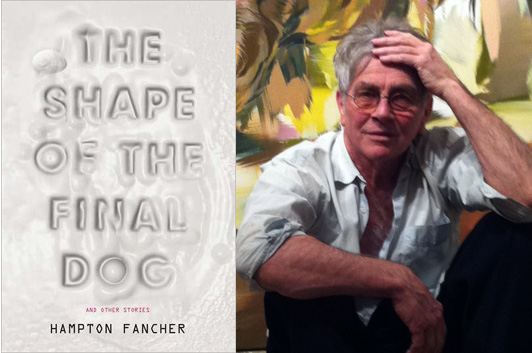Read This: The Graphic Canon

Rick Geary
Seven Stories Press and editor Russ Kick have recently undertaken a multi-volume project called The Graphic Canon, aiming to present a wide sampling of the most recognized titles in world literature, adapted into illustrated formats. The first volume, for example, started with the ancient epic of Gilgamesh and worked its way up to Les Liaisons Dangereuses, while the just-released second volume picks up with Coleridge’s “Kubla Khan” and makes it as far as The Portrait of Dorian Gray; a third and final volume scheduled for early 2013 should extend the “canon” to Infinite Jest.
Now, as it happens, I don’t believe in canons—well, obviously, I believe canons exist, as lists of books that certain groups of people deem worth remembering, but I don’t see them as indicators of any intrinsic literary superiority, or even intrinsic literary merit. But a survey of literary history, an extensive checklist of texts that have for whatever reasons had some impact—that could be a very useful thing to have, and so it is in this case. But The Graphic Canon is also a “canon” of late 20th- and early 21st-century illustrators and cartoonists, with contributions from legendary artists like Will Eisner and Robert Crumb, as well as artists who ought to be legendary, like Rick Geary (whose adaptation of The Book of Revelation is sampled above).
It is, however, as mixed a bag as you would expect an anthology with dozens of contributors to be. For every visually fluid work like Noah Patrick Pfarr’s lesbian re-imagining of John Donne’s “The Flea,” there’s an equally static piece like Yien Yip’s version of Marvell’s “To His Coy Mistress.” And some of the contributions are not “adaptations” so much as accompanying illustrations, like Molly Crabapple’s (admittedly gorgeous) drawings inspired by Les Liaisons Dangereuses or S. Clay Wilson’s artwork for Grimm and Andersen fairy tales, or Ellen Lindner’s simple, joyful “headshots” accompanying Leigh Hunt’s “Jenny Kissed Me.” But when The Graphic Canon really clicks, as it does with Geary’s Revelation, or Gareth Hinds’s wordless vision of Beowulf, or Megan Kelso’s excerpt from Middlemarch, it shows graphic storytelling techniques at their finest and gives us an alternative entryway into texts whose reputations might sometimes get in the way of our appreciation. (I’m not saying that’s always the case, of course, but there are surely readers for whom, let’s say, the religious significance of Revelation or the sheer size of The Tale of Genji have proved initimidating.)
As part of the buildup to the 2012 Brooklyn Book Festival, Seven Stories is bringing several contributors to the Graphic Canon project together for a free event at The Bell House on September 18. They’ll be joined by my pal Richard Nash of Small Demons, whose catalog of references to people, places, and things in books promises to open up a whole slew of new road maps into literature.
18 September 2012 | read this |
Hampton Fancher Returns to “The South”

photo: Mario Grigorov
There’s a line in one of Hampton Fancher’s short stories where he mentions the surrealist painter Giorgio di Chirico, and though it’s not meant to be a summation of The Shape of the Final Dog, it is just the same—that feeling you get of individually “real” objects that have been arranged together in a dream-like environment, interacting in unexpected and unpredictable ways. In Fancher’s worlds, a frustrated painter creates an opportunity for a young boy to meet his idol, a crippled talking crab, or a gonzo journalist can score an airborne interview with (a very dead) Howard Hughes, and if you want to read the title story as a funhouse version of themes from Fancher’s most famous screenplay, Blade Runner, I think that’s entirely within the realm of possibility…
A great short story happened to me the first time in the 1960s. It was just a few pages by Harlan Ellison called “I Have No Mouth and I Must Scream.” The guy who turned me on to it was missing three fingers. I remember that story, it never leaves and it keeps coming out.
Then there was a Bradbury called “In A Season of Cold Weather.” Something happened to the old man in that story that neither of us will ever forget.
But I love Paul Bowles, too—those stories of people turning into snakes and crabs, screaming at the moon—”By The Water” is right down the rabbit hole. And Charles Bukowski, those three-to-four pagers with unexpected last lines, come down on your head like a rubber hammer. And “Bullet in the Brain” by Tobias Wolff—so smart and full of heart it’s blinding. And the honest, soul wrenching beauty of Alice Munro. And the smart gleam of mean extreams of Roald Dahl like in “Taste.”
But one that got me way back and never lets go, which became a variation in almost everything I ever wrote, is a story by Borges called “The South.” Loneliness, sickness and the absurdity of self regard, the perverse courage of dignity. Tell Robinson Crusoe no man is an island. Starts with arrival, ends with departure—or the other way around. Three little pages. Inertia sustained by spirits and dreams, obssessions. The promise of a place that protects, which will exact the ultimate price. That which sustains will kill you. A lullaby in a vortex. The lewd spitful scuffle between apathy and aspiration.
An accident packed in ice that waits when warmth is what you need. The dream of a lake in a drowning man. The ironic splendors of mortality. (See also: “Appointment at Samara.”) A little ball of bread thrown across the room can end your life. And what you thought was the cornerstone of salvation will crush you. Like the end of “The Stranger,” no hope, but no fear and death becomes exoneration.
11 September 2012 | selling shorts |

 Our Endless and Proper Work is my new book with Belt Publishing about starting (and sticking to) a productive writing practice.
Our Endless and Proper Work is my new book with Belt Publishing about starting (and sticking to) a productive writing practice. 
